How to make the Website into a Sales Engine
How business owners can transform website visitors into real enquiries and customers.
Getting clicks is the first step. Turning those clicks into leads is where business growth happens. Many websites attract traffic, but far fewer convert it. The gap between a visitor and a customer is bridged by thoughtful design, persuasive content, simple forms, and clear trust signals. This article explains practical, high-impact steps you can take to convert casual visitors into real leads.
Start with the right mindset: conversion is a process
Think of your website not as a brochure but as a sales process that runs automatically. Each page should guide a visitor one step closer to contacting you. Small changes at each step — clarity of message, better calls-to-action, shorter forms — compound into large increases in enquiries and sales.
1. Make the value clear within 3 seconds
Visitors decide quickly whether to stay. Your homepage and landing pages must clearly answer three questions in seconds:
- What do you offer?
- Who is it for?
- What should the visitor do next?
A strong headline, a concise subheading, and a prominent call-to-action (CTA) solve this problem. Avoid long, vague intros — lead with clarity.
2. Use focused landing pages
Traffic from ads, social posts, or search should land on pages designed for that intent. A generic homepage rarely converts as well as a focused landing page that matches the ad’s promise and answers the visitor’s specific question.
Match the message, keep forms short, and remove distractions such as unrelated links or excessive navigation on conversion-focused pages.
3. Optimize your calls-to-action
CTAs should be action-oriented and specific. Instead of a generic "Contact Us", use phrases like:
- "Get a free quote"
- "Book a free consultation"
- "Request a demo"
Place CTAs in multiple, logical positions — above the fold, after key benefits, and at the page end. Make them stand out visually and use verbs that promise value.
4. Simplify forms — ask only what you need
Long forms kill conversions. Ask for essential information only. For first contact, name, phone or email, and a quick message are often enough. If you need more details, capture them later in a follow-up or a step-by-step form.
Use placeholders, clear labels, and inline validation so users know what to enter and why.
5. Use social proof and trust signals
Visitors trust businesses with proof. Add customer testimonials, case studies, client logos, star ratings, and short quotes near CTAs. For local businesses, display Google reviews or badges from local authorities. Trust signals reduce hesitation and increase the likelihood of contact.
6. Speed and mobile usability matter
Slow pages and poor mobile experiences cause users to leave before converting. Optimize images, enable caching, and test your site on mobile devices. A seamless, fast experience raises conversions and improves search rankings too.
7. Create clear conversion paths
Map out the journey you want visitors to take: from landing page → benefit section → social proof → CTA → form. Remove distractions along this path. Each page should have one main action and supporting elements that reinforce it.
8. Use content to reduce friction
Good content addresses doubts before they arise. FAQ sections, short explainer videos, simple pricing information, and clear service steps all help. Show what to expect after they contact you — response times, the next steps, and any guarantees you offer.
9. Measure, test, and iterate
Conversion optimization is ongoing. Use analytics to measure which pages convert, where visitors drop off, and how long they stay. Run A/B tests on headlines, CTA text, form length, and page layouts. Small, data-driven changes compound into big improvements over time.
10. Follow up fast — speed matters
Once a lead arrives, fast follow-up converts more. Integrate forms with email or CRM systems to ensure enquiries are acknowledged immediately. A simple automated response WDthat promises a phone call within a set time builds trust and keeps potential customers engaged.
Quick checklist:- Clear headline and CTA within 3 seconds
- Landing pages tailored to ads or campaigns
- Short forms and visible CTAs
- Trust signals near CTAs
- Fast, mobile-friendly pages
- Analytics and conversion tracking in place
Final thoughts: small changes, big results
Turning clicks into leads is a mix of clarity, convenience, and credibility. Start by fixing the fundamentals: make your value obvious, remove friction, and give visitors an easy path to contact you. Test, measure, and improve. These practical steps will help your website become a dependable source of qualified leads — not just a place where people stop by and leave.

